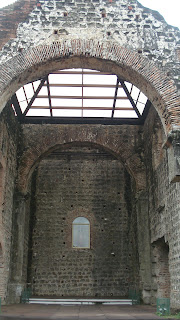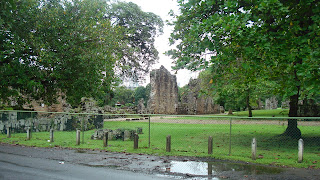It is always good to learn a little history!
The first settlement to bear the name of Panamá (now Panamá Viejo) was founded in 1519 by the Spanish conquistador Pedrarias Dávila. It was the point of departure for the first explorations along the Pacific coast, which had been discovered in 1513 by Vasco Nunez de Balboa.
There were originally some four hundred settlers in Panamá, living in some seventy huts. Many of these moved down to Peru when the conquest of that region was completed in 1532: there were only thirteen male Spanish settlers left in Panamá, with some five hundred Indians, by the following year.
However, Panamá eventually consolidated its key position on the transoceanic route between Spain and the Americas as the terminal on the Pacific coast (that on the Atlantic coast was first Nombre de Dios and then Portobello). Its importance is indicated by the fact that it became a Real Audiencia (Royal Court of Justice), the third to be created in the Americas (after Santo Domingo and Mexico City). The town, with its imposing monuments, was ravaged by the 1621 earthquake and then by fire in 1644, but it was not deserted by its inhabitants until 1671, when it was burnt by the privateer Henry Morgan, who had taken Portobello three years earlier.
The new settlement was built on a small peninsula nearby and provided with the fortifications that its predecessor had lacked. Dressed stone from Panamá Viejo was re-used: in some cases, such as La Merced, entire church facades were reconstructed on the new site. However, the 18th century saw a decline in the city's fortunes.. It lost its strategic significance when bullion from upper Perú began to be transported to Spain via the River Plate: the Real Audiencia was closed, and the Portobello fairs were cancelled. It was also badly damaged by fire in 1737, 1756, and 1781.
By the time Panamá secured its independence from Spain in 1821 the population was only some five thousand. In 1826 El Libertador, Simon Bolivar, invited all the newly independent American nations to an Amphictyonic Congress in Panamá, and delegates from Peru, Colombia, Central America, and Mexico took part, along with representatives of the USA, Great Britain, and the Netherlands. It took place in the former chapter hall of the Franciscan monastery, which had been abandoned by the community in 1821 (it was to house the first Constitutional Assembly in 1904).
It enjoyed a short boom during the California Gold Rush, since many people preferred to travel to the isthmus and cross to Panamá so as to continue by ship to California rather than crossing the North American continent by railroad. By 1870 the population of the town had reached 10,000, and this had risen to 25,000 by the end of the 19th century.
A watershed was reached in 1903, when Panamá gained its independence from Colombia and the USA took over the great canal project. The town expanded enormously, with the inevitable result that, since the more desirable properties were located in the outlying districts, the historic centre fell into a decline; by 1950 most of the houses were in multiple occupation. Nevertheless, the Historic District remained the seat of the Panamanian Government: the Presidency and several ministries are still there.
Source: Advisory Body Evaluation
 |
| Look over here, the church! |
 |
| Panama Man deep in thought |
 |
| The Panama Woman posing. |
















No comments:
Post a Comment